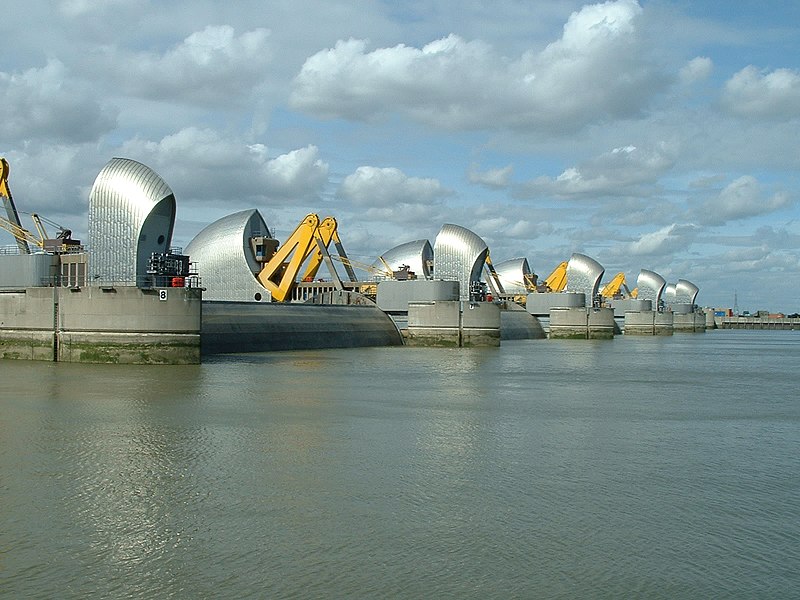
The Thames Barrier, a defensive structure across the River Thames in East London, has been protecting the city and its surroundings from storm surges of up to 7 meters from the North Sea
for 40 years. Since its inauguration, the barrier has been closed 221 times to prevent flooding in the capital.
As officials celebrate its 40th anniversary, they highlight the future need to raise flood defense walls in London by 50 cm (20 inches) to address climate change impacts. The barrier, officially opened by Queen Elizabeth II on May 8, 1984, was originally designed to protect London from flooding until 2030. It is now expected to remain operational until 2070.
Covering 125 square kilometers (31,000 acres) of central London, the Thames Barrier safeguards nearly 1.5 million people, four World Heritage sites, over 4,000 listed buildings, and more than 300 kilometers (185 miles) of roads.
Experts note that with rising temperatures and sea levels, the barrier is being used increasingly often. By 2100, sea levels are expected to rise by one meter (3.3 feet), necessitating enhanced protection measures for the capital.
The Thames Barrier currently features 10 steel gates that can be raised across the Thames when needed. When raised, the main gates stand as tall as a five-story building and span the width of the Tower Bridge opening. Each main gate weighs 3,300 tons. Photo by Andy Roberts from East London, England, Wikimedia commons.



































